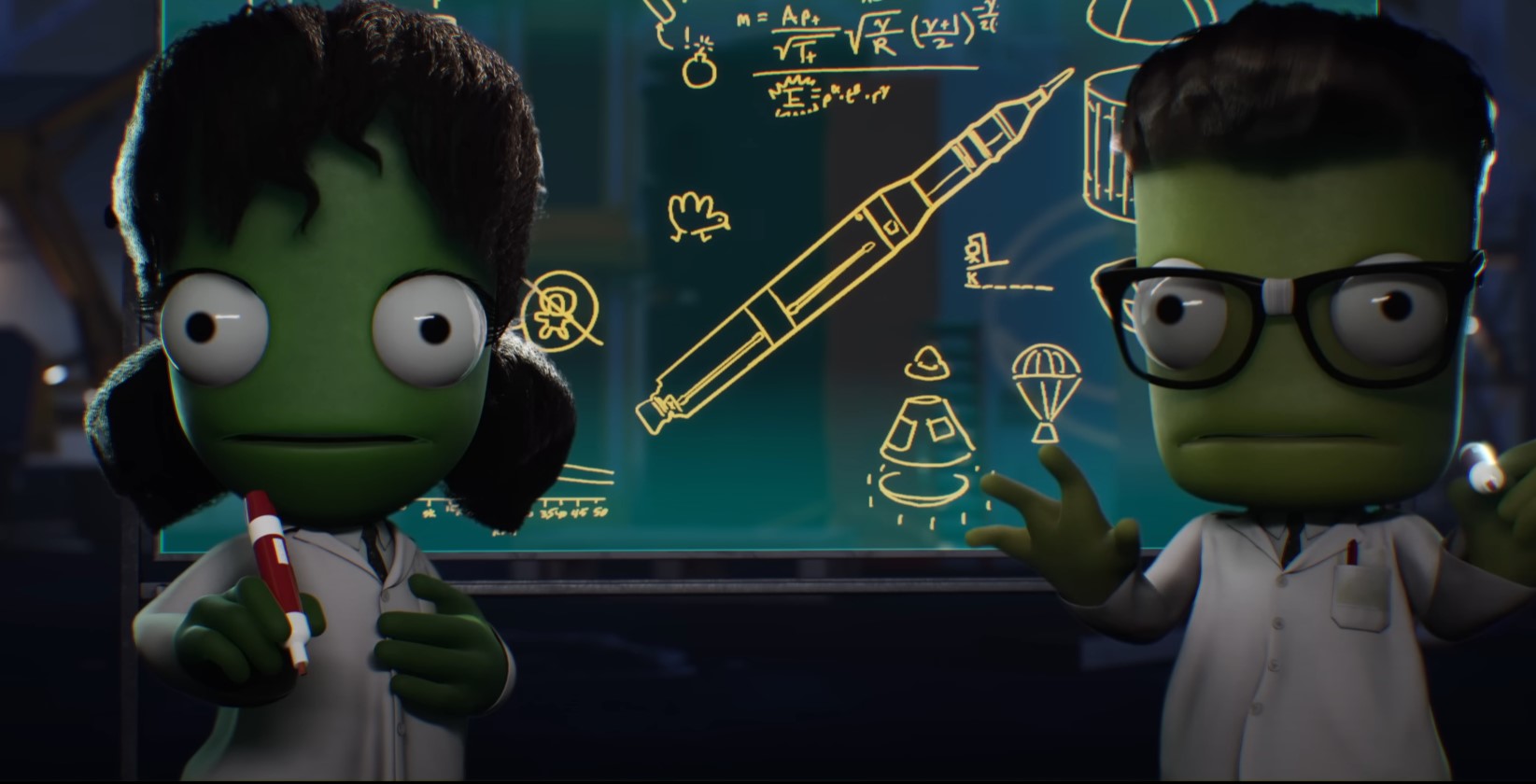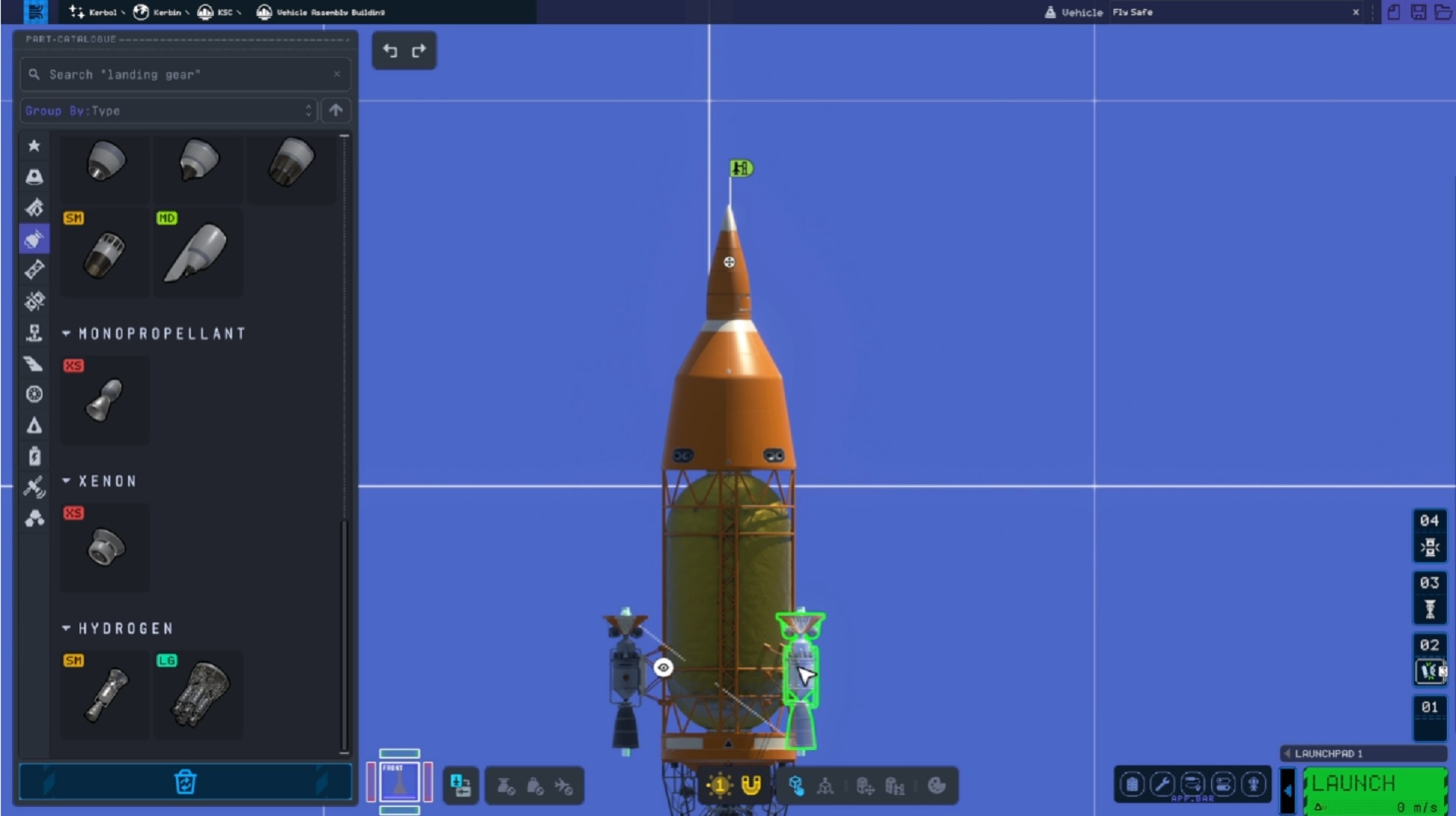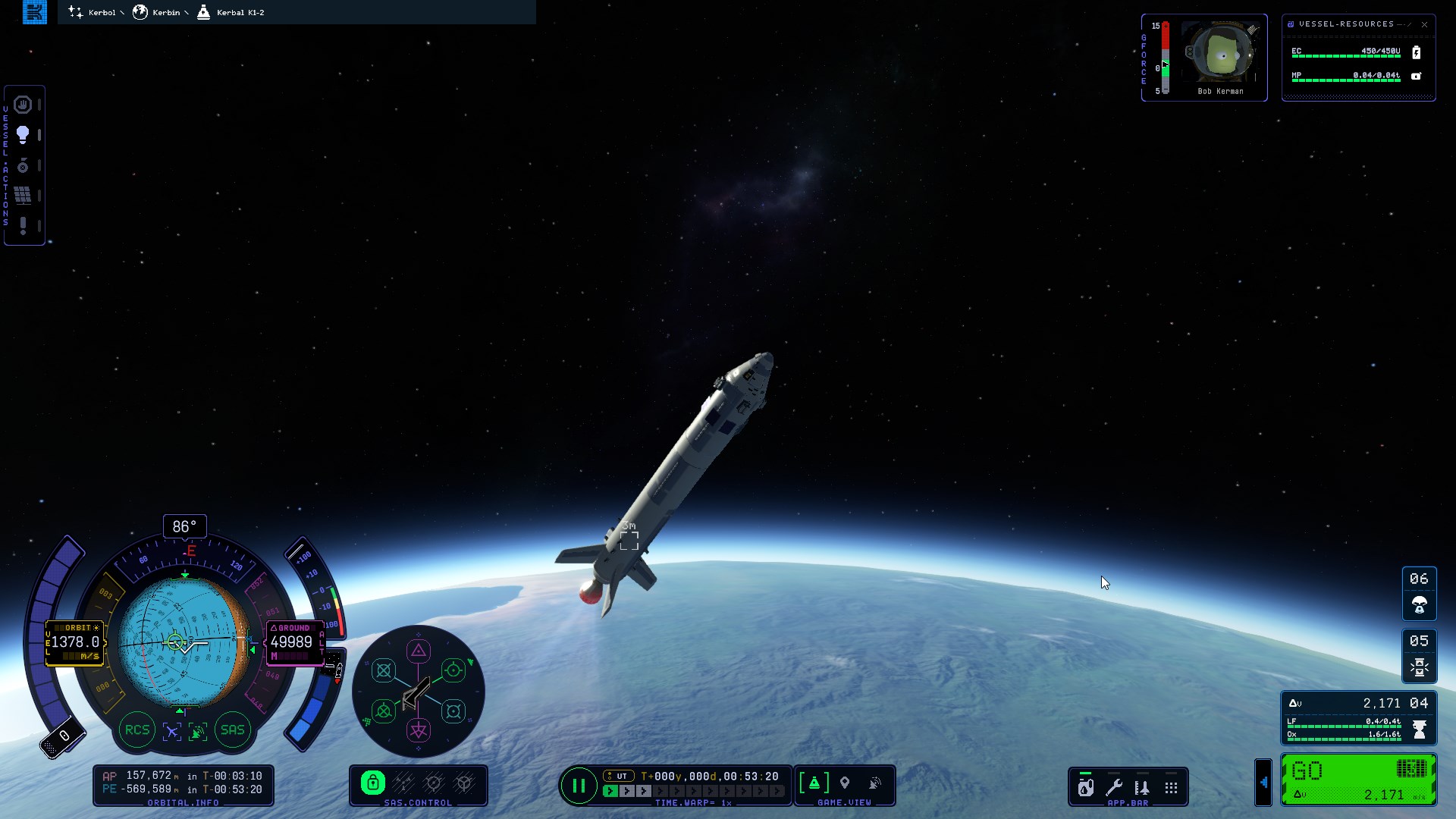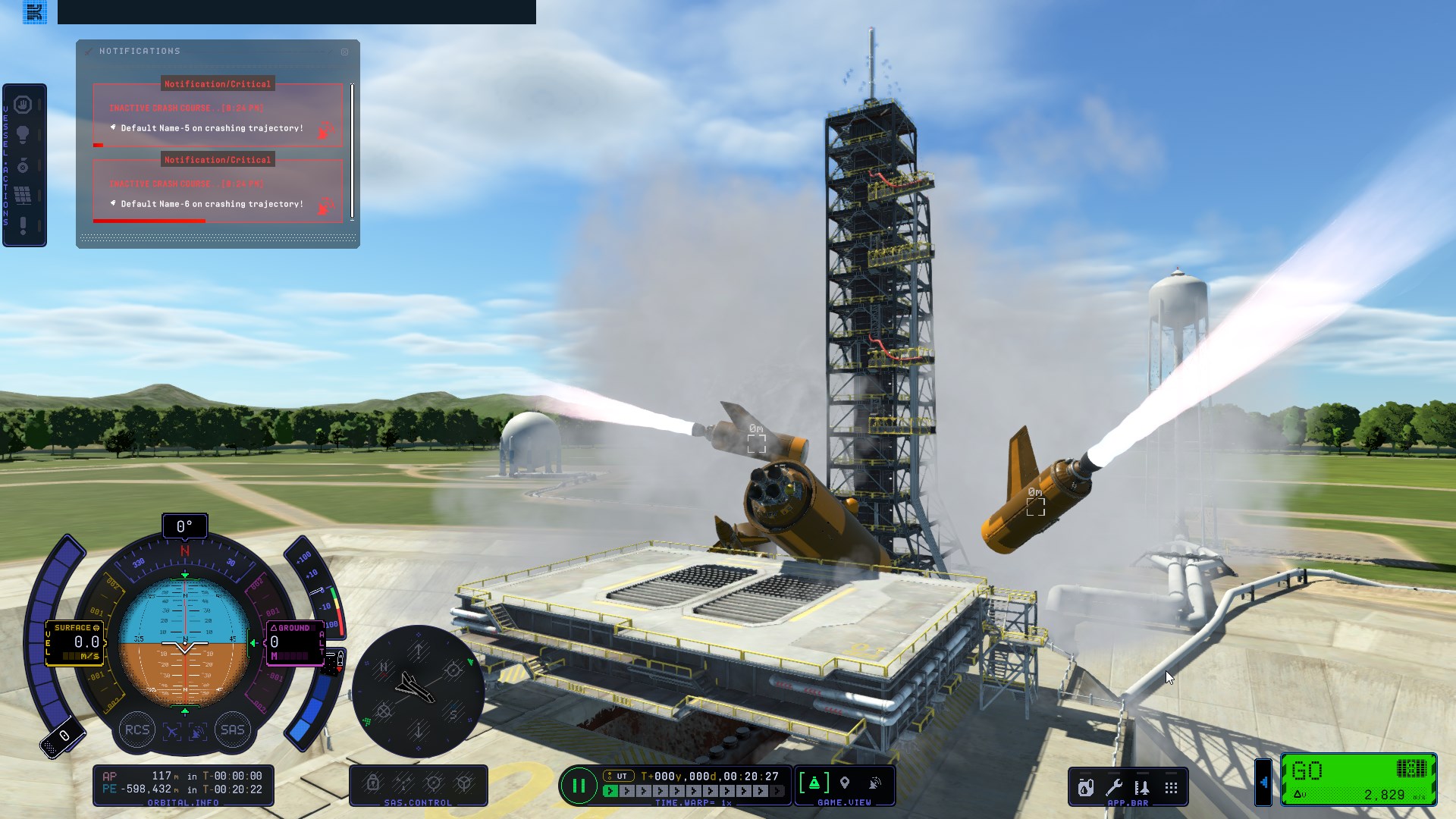9 Kerbal Space Program 2 tips for beginner rocket scientists
KSP2's new tutorials are helpful, but there's more you should know to make it to the Mun and beyond.

Despite an early access launch that resembles Apollo 13 more than 11, Kerbal Space Program 2’s sandbox is still a fully-featured rocketry simulator. It’s easy to get overwhelmed by the details of periapsis and apoapsis thrust maneuvers, but there’s some basic foundations that can help fledgeling Kerbalnauts make the jump from launching scrapyard V2 rockets to coordinating Soyuz missions.
1. Play the tutorial, even if you don't think you need to
Kerbal Space Program 2 is so vast in scope and scale, it’s likely that your first run of rocket launches, no matter how modest the mission, will fail in some way. Kerbal Space Program 2’s tutorials cover space flight 101. If you’re more keen on learning through trial and error, it’s still worth checking out the first two modules. There, you’ll learn about how to build semi-functional rockets, the absolute basic principles of aerodynamics, and get a primer on how to reliably enter exit orbit.
2. Keep a pen and pad nearby
Rocketry is ultimately a numbers game, and when, where, and by how much you tweak every little thing can have enormous impact on the journey of your vehicle. Committing to an eastward gravity turn at, say, 6,000 feet instead of the 10,000 suggested by the tutorial, dramatically increased my craft’s distance from Kerbin, putting me on an early-game path towards the Mun’s orbit. Keeping track of figures such as headings, turn altitudes, and tonnage will help identify the weak links (and potential points of failure) in your flights.
3. Use template vehicles before building your own rockets from scratch

KSP2’s vehicle assembly building is so stuffed to the gills with parts, it can be difficult to know where to start when it comes to building a successful rocket. Helpfully it comes with a few pre-loaded vehicles, each with a set goal in mind. The Kerbal-K1 is ready to orbit Kerbin, while the K2 is perfect for your first shot at a moon landing. While these vehicles are great for learning the ins and outs of space flight, they’re also great modular testbeds for your own amateur science projects.
The K1’s thrust to weight balance and ease of control makes it a good candidate for refitting into a satellite delivery vehicle. Similarly, the K2’s overpowering in-atmosphere performance makes it a great fit for dragging space station modules up into orbit.
4. Read EVERY parts description
While the individual numerical figures as they relate to mass, drag, and lift are obviously beneficial to those who got higher than 51% in their mandatory college math course, it can still be difficult to make exact sense of what a part actually does differently than the one next to it. Pressing the shift key when hovering over a part in the parts selector will unfold a brief description and highlight one or two key aspects, as well as any potential drawbacks. I found this especially helpful when trying to identify what liquid fuel boosters would work best on takeoff (hint, for small rockets it’s always the RT-10 “Hammer”).
5. Always implement RCS into your builds

Maintaining balance after take-off is one of the best ways to prevent your craft from rattling itself to death like some aging laundromat dryer. Center of mass and center of thrust both play a huge role in determining the overall stability of a launch, but these can be somewhat abated by implementing RCS functionality into the design. Some command modules (like the MK1 Tin Can) will feature a built in reaction wheel, but for the ones that don’t, consider sliding an RC module (found under the probe category) between the command module and the stack decoupler.
Keep up to date with the most important stories and the best deals, as picked by the PC Gamer team.
Toggling the RCS module on with “R” just prior to launch will autopilot the craft straight up, and can easily be toggled on and off to serve as high tech cruise control. It’s not too much help in space thanks to KSP 2’s nav wheel, but RCS can make those tricky takeoffs a breeze.
6. Double- and triple-check your staging configuration
In the vehicle assembly building, the big bar of plusses, minuses, and little booster engine symbols represents your staging configuration, the order in which your initial boosters fire and decouple. While KSP2 will automate the order in which stages activate, it’s always a good idea to make extra certain that everything is in its right place. For the most efficient takeoff, fire as many boosters as possible all at once, and drop the spent ones with radial decouplers.
7. Plan trips accordingly

The inbuilt trip planner will handily calculate the estimated range of your rocket, reflecting the values in real time. It’s a helpful thing to leave open when assembling a rocket, as it’s essentially a constantly updating fuel efficiency value that can help in determining what’s theoretically possible with any given spacecraft.
8. Hit the books
KSP2 is monumentally complex, a space simulation of uncontested depth. Ironically, at this stage in development one of the best resources available is still Kerbal Space Program 1’s campaign mode. A little structure can go a long way with a curriculum as advanced as space travel, so if you have the original still kicking around in your library, it might be worth hopping back in to refresh on the basics. Alternatively, there’s a suite of Youtubers and Twitch streamers who are already pushing KSP2 to its breaking point. When in doubt, there’s no shame in following in the footsteps of pros like Scott Manley or Blitz.
9. Be patient

Robert Goddard, the inventor of the liquid fueled rocket, only lived long enough to see Werner Von Braun’s V2 rocket rain down on Britain. Von Braun, in turn, never saw the ISS or the space shuttle. It’ll be a while before you’re launching space stations up into orbit, or touching down on the surface of another planet. Keep at it, and remember that one good test is worth a thousand expert opinions.

Nova Smith is a freelance writer based out of Alberta, Canada. Nova's grab bag of non-gaming interests and passions includes Japanese mecha anime, miniature painting, as well as history, literature, and classical music. Nova also moonlights as a bureaucrat and amateur historian.

